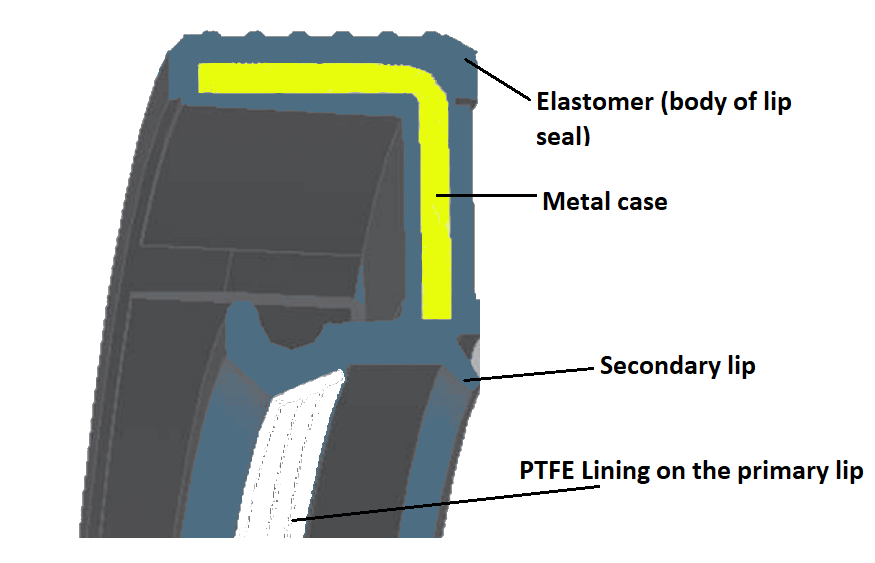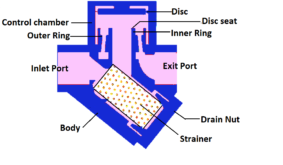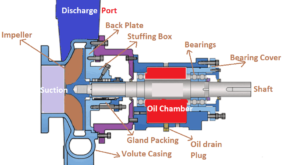Table of Contents
What is a lip seal?
Lip seal belongs to the category of dynamic seals. One of the components of dynamic seal mates with the rotating shaft, hence the name dynamic. Dynamic seal seals the gap between the rotary and stationary parts of equipment to prevent the leakage of working fluid through the gap. Mechanical seals and lip seals are the best examples of dynamic seals. In general, the stationary part is the housing, and the rotary part is the shaft. The type of seal which is suitable for the particular application is decided based on the available space between the housing and the shaft, friction generated between the contact points of the seal and the rotating shaft, and allowable leakage of working fluid through the seal.
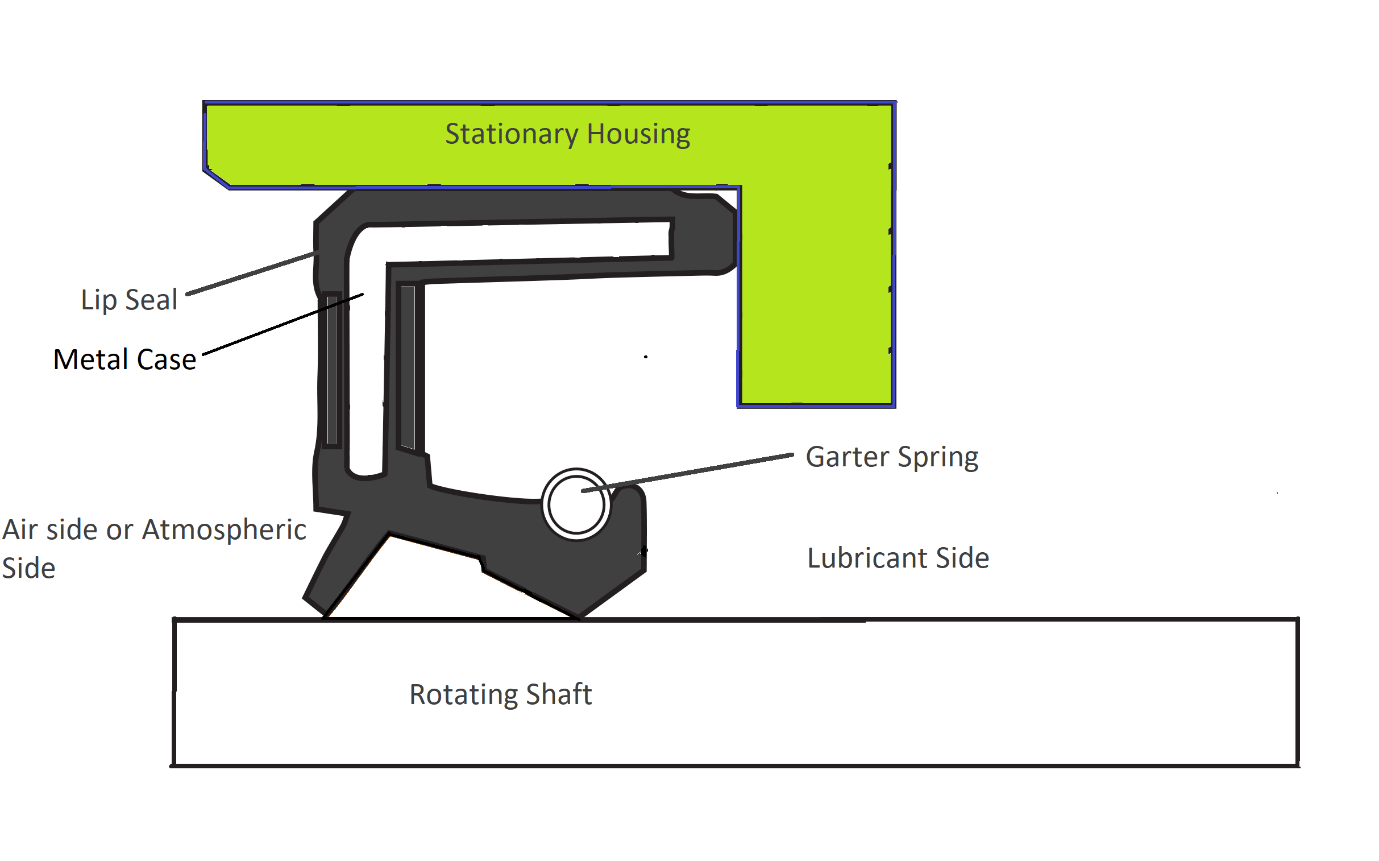
Purpose of Lip Seals
The purpose of the lip seal is to prevent the leakage of working fluid (i.e., generally lubricants) from the oil chamber and also to prevent the ingress of foreign particles into the lubricants through the gap between the rotary and stationary parts as shown in the above figure. The oil seals used in pumps and gearboxes are mostly lip-type seals.
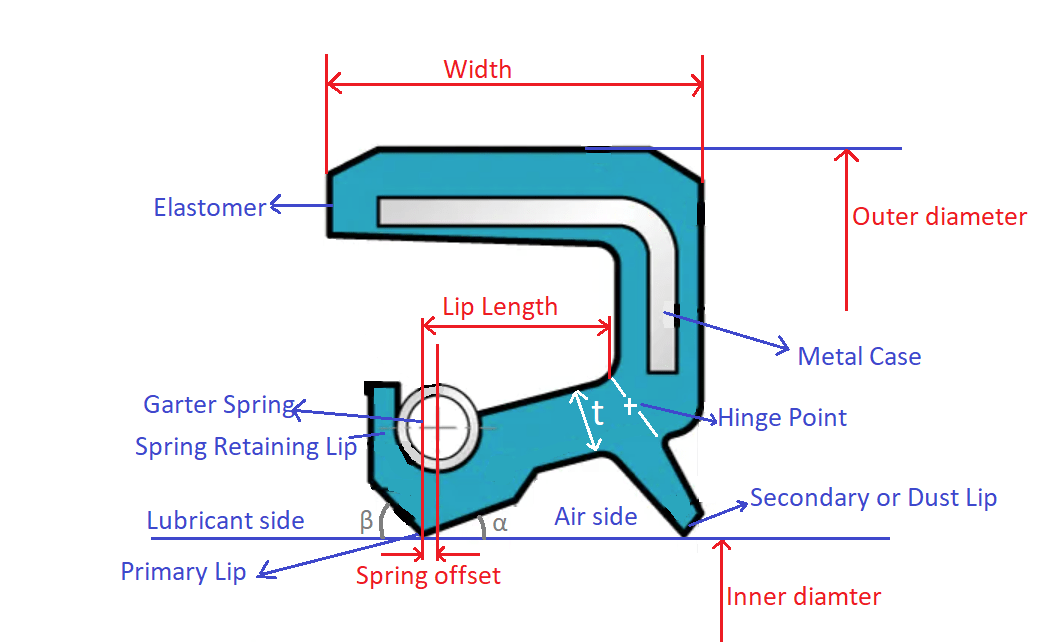
Fundamental Design of Lip Seal
A typical lip seal contains the following parts. They are
- Elastomer
- Metal case
- Garter spring
- Primary lip
- Secondary lip or dust lip
- Spring retaining lip
- Hinge point
Elastomer:
The outer body of the lip seal is made up of an elastomer. Elastomer houses the garter spring, metal case, primary lip and secondary lip.
Metal Case:
The lip seal should have sufficient stiffness to avoid warping or distortion of the seal in the service. The metal case inside the lip seal acts as a reinforcement and provides stiffness to the elastomer.
Garter Spring:
The contact between the primary lip and the rotating shaft has to be ensured always to prevent the leakage of the working fluid. It is achieved by the garter spring which applies uniform circumferential compression on the lip.
Primary Lip:
It is the portion of the lip seal that sacrifices itself to prevent the leakage of lubricant. The primary lip is one of the portions of the lip seal that contacts with a rotating shaft.
Secondary Lip or Dust Lip:
The dust lip is another portion of the lip seal that is in contact with a rotating shaft. The purpose of a dust lip is to prevent the ingress of foreign particles into the lubricant chamber.
Spring Retaining Lip:
It retains the spring within the seal.
Hinge Point:
The hinge point is the portion about which the primary lip undergoes rotation. When the shaft has radial deflections or runouts, the primary lip accommodates it by undergoing local deflection i.e. rotation about the hinge point.
Critical Dimensions of a Lip Seal
- Inner diameter
- Outer diameter
- Seal width
- Lip length
- Angle of primary seal on the oil side (
 )
) - Angle of primary seal on airside (
 )
) - Lip thickness at the hinge point
- Radial interference of lip

The primary lip or lip (as shown in Figure 2) is a portion of the lip seal where the primary sealing is achieved. The lip is in contact with the rotary shaft. Half side of the primary lip is exposed to atmospheric air and the other half is exposed to the working fluid or lubricant. The geometry of the lip is asymmetric (observe the primary lip carefully, the angle of ![]() . The portion of the lip exposed to the atmospheric air side makes an angle
. The portion of the lip exposed to the atmospheric air side makes an angle ![]() with respect to the shaft surface which is parallel to the axis of rotation of the shaft. Similarly, the other portion of the primary lip makes an angle
with respect to the shaft surface which is parallel to the axis of rotation of the shaft. Similarly, the other portion of the primary lip makes an angle ![]() . The angle of beta is larger than alpha as shown in the above figure. Hence the geometry of the lip is asymmetric. It means the oil side primary lip is steeper than the air side.
. The angle of beta is larger than alpha as shown in the above figure. Hence the geometry of the lip is asymmetric. It means the oil side primary lip is steeper than the air side.
The flexibility of Lip Seal
The flexibility of the lip seal is determined by its lip length and thickness. If the lip length is high and thickness is less, the flexibility is high which is necessary for the shafts having relatively high radial runouts. Similarly, for sealing high-pressure fluids, the lip length should be less and the thickness should be relatively high to achieve higher stiffness.
Spring Offset
The spring is offset to the contact point of the lip and the shaft. The offset is towards the air side as shown in Figure 3. If the offset is towards the lubricant side, it may cause tilting of the lip and lead to lip distortion that may result in leakage of lubricant. The tilting of the lip may lose contact with the shaft. The value of offset is around 10 % of lip length.
Sealing Pressure
Lip seals of elastomeric type are generally used to seal the lubricants (i.e. used as oil seals). These types of seals withstand pressure up to 0.3 bars (g) at the lubricant side with the other side as air at atmospheric pressure.
Pressure distribution
To ensure proper contact between the shaft and the lip seal, the fit between the lip and the shaft is made to interference. However, the interference is dependent on the flexibility of the lip and the wear of the lip. As a redundancy, the garter spring is employed to ensure proper contact always. The spring tension on the lip and the interference fit create pressure on the lip. The pressure distribution is shown in the following figure.
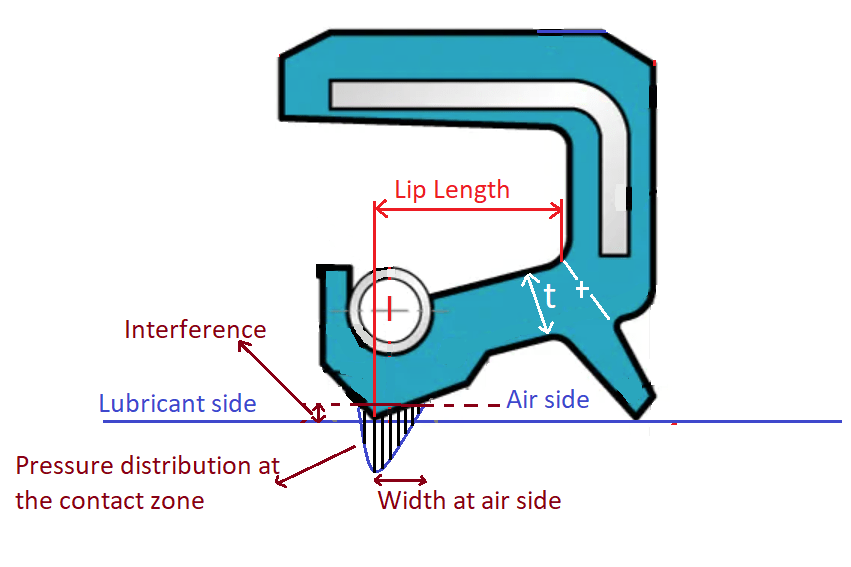
Observation from the pressure distribution profile
- The contact pressure peaks at the lip.
- The contact pressure is zero at the edges.
- The contact zone width is higher on the air side as compared to the oil side because of asymmetric geometry as we discussed above.
How does lip seal work?
Mechanism of Lip Seal
Initially, the lip portion of the lip seal is sharp as shown in the above figure. After an hour of installation, the width of the contact zone of the lip increases to 0.3 mm. After 100 hours of running, the width increases to 0.5 mm. Due to friction between the lip and the shaft, the lip distorts and the subsurface texture of the lip is exposed. i.e. elastomer exposes its asperities and micro undulations. Since the shaft is running, the asperities of the elastomer are deformed and aligned at an angle to the shaft due to the rotation of the shaft as shown in the following figure. Hence, these asperities are directionally oriented.
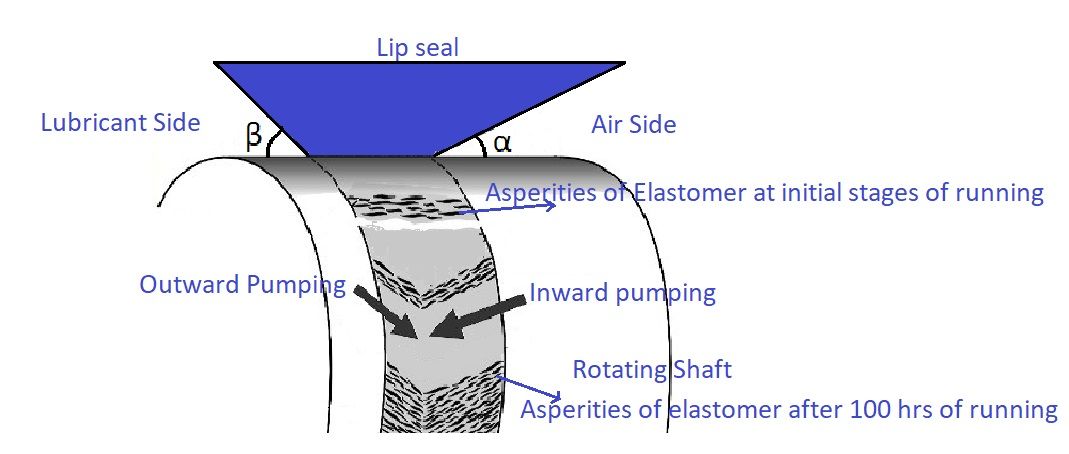
From the pressure distribution of the lip, the magnitude of pressure peaks at the lip. Hence, the asperities are aligned differently at both sides of the peak point. These micro asperities act as micro hydrodynamic wedges. When the shaft rotates, the asperities on the oil side pump out oil toward the atmospheric side due to the hydrodynamic wedge principle. This hydrodynamic action results in sufficient pressure building up in the contact zone to support the radial load of the seal. Consequently, microfilm forms between the lip and the shaft, causing the contact lip to lift slightly from the shaft.
Because the asperities of the elastomer are present on both sides of the peak, which are the air side and the oil side, the pumping action occurs simultaneously on both sides. The extent of asperity fields is more pronounced on the air side compared to the oil side, primarily due to the asymmetric geometry of the lip. As a result, the inward pumping of oil is more dominant than the outward pumping, ensuring that the lubricating film returns to the oil side without any leakage to the air side. This continuous pumping mechanism maintains a consistent flow of oil to the contact zone between the lip and the shaft, ultimately returning it to the oil side.

Effect of Shaft Surface on Lip Seal Performance
- If the shaft surface is very smooth, the shaft surface will not peel off the elastomer, the subsurface of the seal will not be exposed to the shaft, and asperities will not be there. With no asperities in the contact zone, no microhydrodynamic lubrication.
- If the shaft surface is rough, the lip portion of the seal wears fast.
- The surface roughness of the shaft should be
 to achieve optimum seal performance.
to achieve optimum seal performance.
Lip Seal Materials for Industrial Use
The following are the widely preferred materials for constructing the lip seal. They are
- Neoprene
- Nitrile-Butadiene Rubber (NBR)
- Hydrogenated Nitrile Butadiene Rubber (HNBR)
- Teflon (PTFE)
- Silicone
- Fluoroelastomer (FKM)
Lip seal vs O-ring
A lip seal is a dynamic seal positioned between stationary and rotating components. While the lip seal itself remains stationary, one part of it contacts the stationary component, and the other part contacts the rotating component. This interaction creates relative movement between the lip seal and its contact surfaces, resulting in gradual wear over time. Consequently, the lip seal tends to have a relatively shorter lifespan compared to an O-ring.
In contrast, an O-ring is a static seal used between two stationary parts. The O-ring and its counterpart do not experience any relative movement. This lack of motion leads to significantly less wear and a longer service life when compared to a lip seal.
Lip Seal Applications
Lip seals are usually used following places:
- Gearboxes and pump bearing chambers: In these areas, a lip seal sits between the housing and the rotating shaft. Its job is to stop any lubricant from leaking out between the housing and the shaft. People often go for lip seals made of Neoprene or Hydrogenated Nitrile Butadiene Rubber (HNBR) because they’re good at sealing lubricants.
- Rotary furnaces: Here, a lip seal is placed between the stationary housing and the hot rotating furnace tube. This prevents flue gases from getting out into the air. PTFE-lined lip (shown in the following figure) seals are the top choice for this job because they can handle high temperatures. Also, PTFE doesn’t wear out quickly since it’s a solid lubricant.
